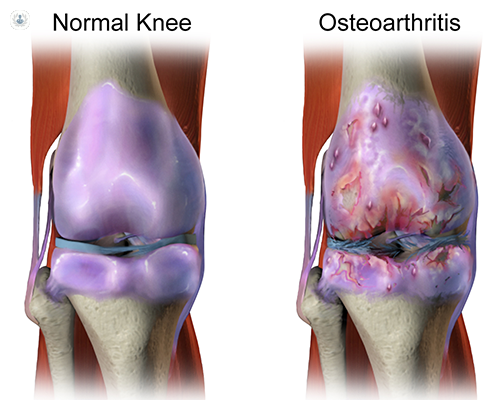How can knee cartilage problems be prevented?
Autore:Knee cartilage problems are a common issue that can lead to significant discomfort and disability. The cartilage in the knee, particularly the articular cartilage that covers the ends of the bones, plays a crucial role in ensuring smooth and pain-free movement. It acts as a cushion, absorbing shocks and reducing friction within the joint.
However, due to various factors such as ageing, injury, or overuse, this cartilage can become damaged or deteriorate, leading to a range of knee problems. Here to provide us with an insightful guide about knee cartilage problems is esteemed consultant orthopaedic and trauma surgeon, Mr Aazer Khan.

What are the most common knee cartilage problems?
One of the most common cartilage-related knee issues is osteoarthritis, a degenerative condition where the cartilage gradually wears away. As the cartilage thins, the bones begin to rub against each other, causing pain, swelling, and stiffness. Over time, this can lead to significant joint damage and reduced mobility.
Other conditions that affect knee cartilage include chondromalacia patellae, where the cartilage under the kneecap softens and deteriorates, often due to misalignment or overuse. Meniscus tears, another frequent cartilage issue, involve the fibrous cartilage that acts as a shock absorber between the thigh and shin bones. These tears can occur suddenly during sports or develop gradually with age.
Cartilage has a limited capacity to heal itself because it lacks a direct blood supply. As a result, even minor damage can persist and worsen over time. Early symptoms of knee cartilage problems often include knee pain during activity, swelling, and a sensation of the knee giving way or locking. If left untreated, these symptoms can progress, leading to chronic pain and further deterioration of the joint.
How are knee cartilage problems treated?
Treatment for knee cartilage problems varies depending on the severity of the condition. Conservative approaches include rest, physical therapy, and anti-inflammatory medications. In cases where the damage is more severe, surgical options such as arthroscopy, cartilage repair, or even knee replacement may be considered. Emerging treatments, like stem cell therapy and platelet-rich plasma (PRP) injections, are also being explored for their potential to promote cartilage regeneration.
How can knee cartilage problems be prevented?
Preventing knee cartilage problems involves maintaining a healthy weight, staying active, and avoiding activities that put excessive stress on the knees. Early intervention is key to managing symptoms and preventing further joint damage, allowing individuals to maintain their mobility and quality of life.


